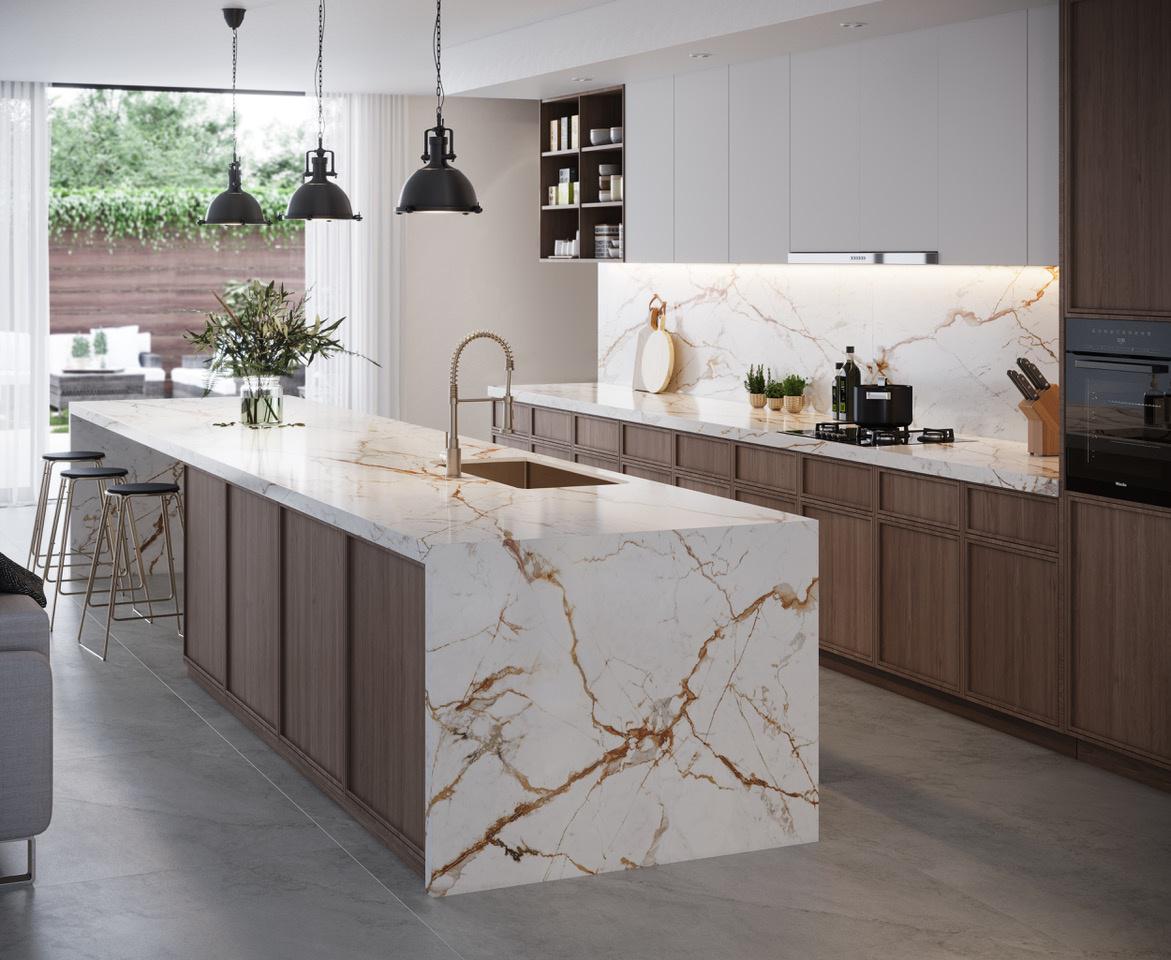
The kitchen island and backsplash are covered with Dekton Onirika, in a marble-like pattern designed … [+]
Cosentino
For our kitchen counters, we have traveled from laminates to butcher block to marble to soapstone to granite, and then back again. Each material has its pros and cons, but none has an ultimate combination of beauty and toughness. Each is, to different degrees, vulnerable to scratching or cutting, etching from acids like lemon juice or wine, and staining from the food you cut, slice and process on the counters. And, don’t put a hot pan on any of those countertops.
Today’s designers favor engineered stone, including quartz or quartzite, for kitchen counters. They bring together durability with resistance to heat and stains. While, for many years, granite was the modern countertop material of choice, the stone is softer than many think and thus vulnerable to etching and staining.
Engineered stone is non porous, more flexible and harder than many types of natural stone. Since it has a uniform internal structure, it does not have hidden cracks or flaws that may exist in natural stone and also has a color and pattern consistency from slab to slab.
The engineered stone that has the design world abuzz is called Dekton. Cosentino, a privately-held Spanish company, manufactures the material and describes it as “an ultracompact surface made from a blend of the same raw materials found in glass, porcelain, and quartz.” What makes it different from other engineered stone is how it’s made. “Through extreme heat and pressure (a process called sinterized particle technology), we’re able to replicate in a matter of hours what it takes Mother Nature over thousands of years to make on her own,” Cosentino says. That process makes Dekton super strong—we’re talking “completely impervious to scratches, stains, heat, ice, or thawing,” according to the company.
Functionally, Dekton has it over Silestone, Cosentino’s line of quartz countertop materials. Quartz might be similarly durable, but the binder used to create it makes it heat-sensitive—it’s not a good idea to put a hot skillet down on the surface, something you don’t have to worry about with Dekton. In fact, Dekton is so tough that it can be used outdoors, and the slabs are increasingly popular for bathroom walls, facades and floors.
MORE FROMFORBES ADVISOR
Cosentino is especially proud of the sustainability aspect of Dekton, saying, “We offset 100% of our CO2 emissions over the entire product life cycle, making Dekton the only cradle-to-grave carbon neutral surface on the market.”
Dekton, available in high-gloss or a matte finishes, is good-looking. A new collection, Dekton Onirika, was designed by international interior design powerhouse Nina Magon of Nina Magon Studio Inc.
“We are thrilled to bring life to Dekton Onirika, following two years of design and production with our dear friend and Cosentino Design Alliance member, the great Nina Magon,” says Eduardo Cosentino, CEO of Cosentino North America and EVP of Global Sales. “This beautiful collection captures the poetic beauty of natural stone.”
Named in honor of blurring the division between reality and a dream-like world, Dekton Onirika boasts serene beauty with eight marble-inspired patterns and finishes.
“The Cosentino R&D department was tremendous support at every touchpoint of this design journey,” says Nina Magon. “With Dekton technology, we crafted Onirika’s distinct, dramatic colors and structures, bringing to life something truly unique and irreplaceable that showcases the vast versatility of Dekton. This symphony of form and matter captures the eye of all who embrace it for countertops, walls, ceilings, facades, outdoor spaces, and more.”







